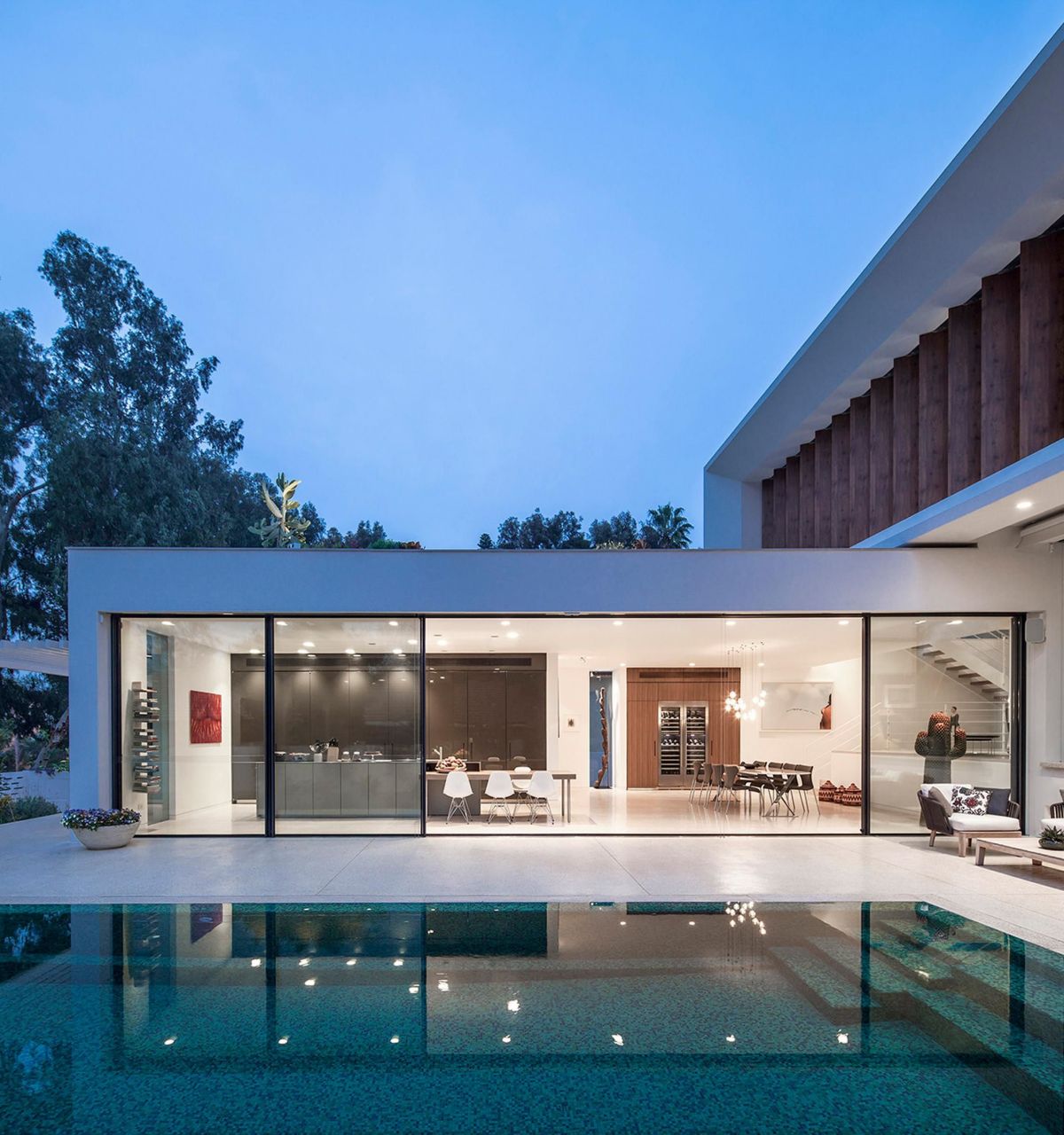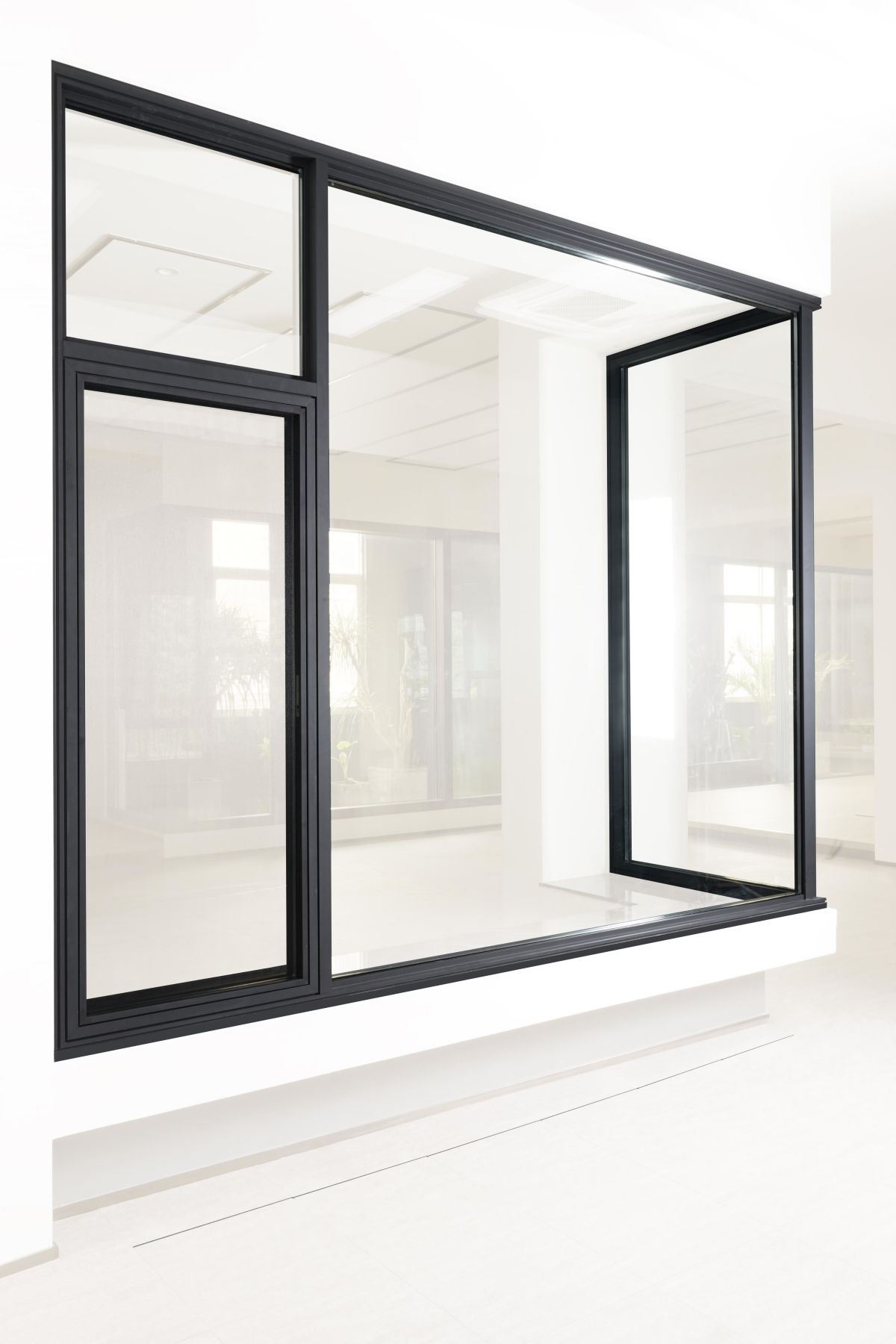We may not imagine that glass, which is now commonplace, was used to make beads in Egypt before 5,000 BC, as precious gems. The resulting glass civilization belongs to West Asia, in sharp contrast to the porcelain civilization of the East.
But in architecture, glass has the advantage that porcelain cannot replace, and this irreplaceability integrates Eastern and Western civilizations to a certain extent.
Today, modern architecture is more inseparable from the protection of glass. The openness and excellent permeability of the glass make the building quickly get rid of the heavy and dark, and become lighter and more flexible.
More importantly, the glass allows the occupants of the building to comfortably interact with the outdoors and communicate with nature in a defined safety.
With the rapid development of modern building material technology, there are more and more types of glass. Not to mention the basic lighting, transparency and safety, glass with higher performance and functions is also emerging in an endless stream.
As the core components of doors and windows, how to choose these dazzling glass?
Vol.1
A Brand Is Very Important When You Choosing The Glass
The glass of doors and windows is processed from the original glass. Therefore, the quality of the original piece directly determines the quality of the finished glass.
The famous door and window brands are screened from the source, and original pieces are purchased from regular large glass companies.
Door and window brands with stricter quality control requirements will also use the original automotive-grade float glass, which has the most outstanding performance in terms of safety, flatness, and light transmittance.
After a good glass original is tempered, its self-explosion rate can also be minimized.
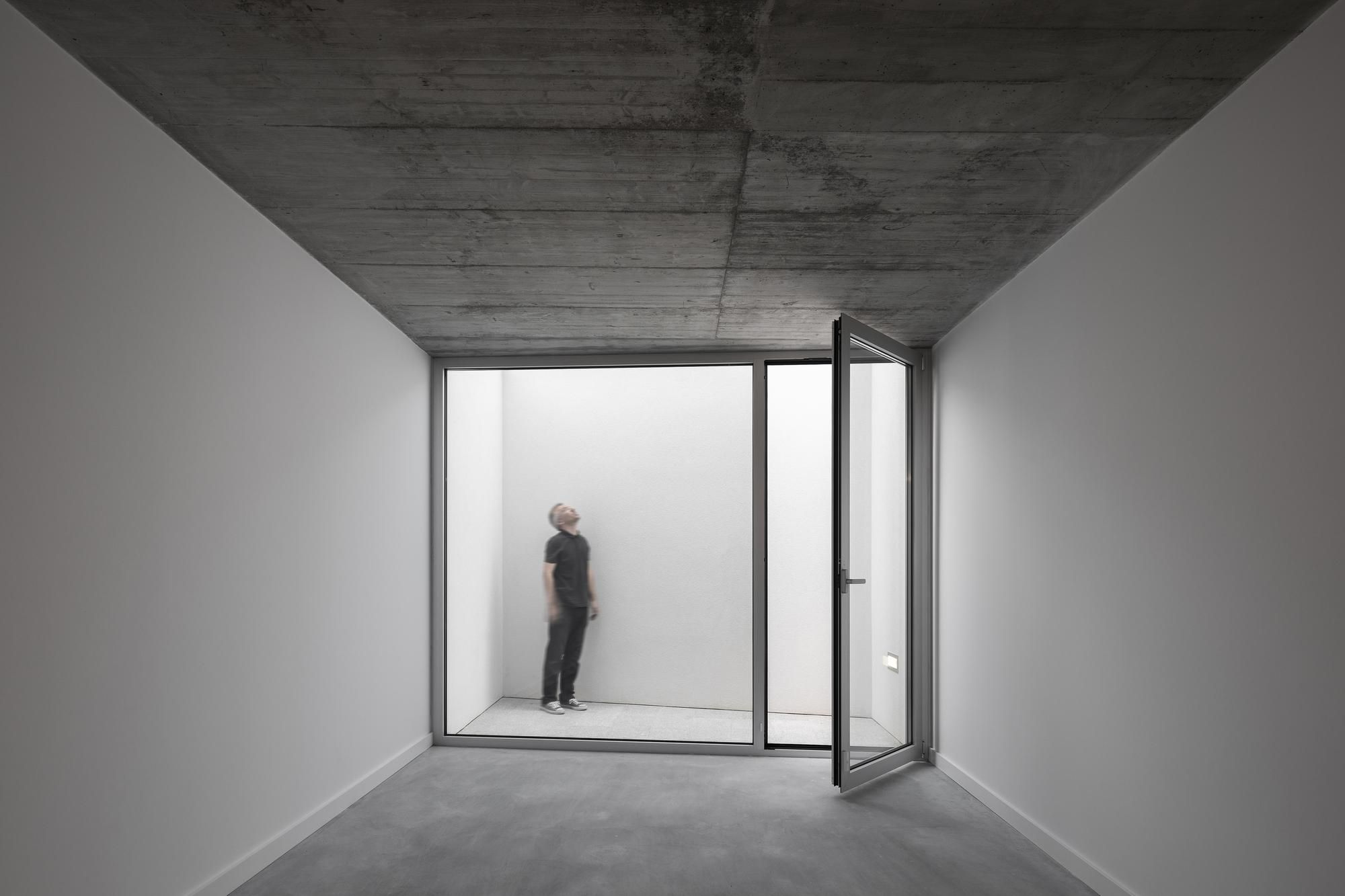
Vol.2
Select The Glass Processed From The Original Float Glass
Float glass is better than ordinary glass in terms of raw materials, processing technology, processing accuracy, and quality control. Most importantly, the excellent light transmittance and flatness of float glass provide the best lighting, vision and decorative properties for building doors and windows.
MEDO selects the original sheet of automotive-grade float glass, which is the highest grade in float glass.
The higher-level ultra-white float glass is also known as the "Prince of Crystal" in the glass industry, with lower impurity content and a light transmittance of more than 92%. Technology products such as solar photovoltaic cells and other industries.
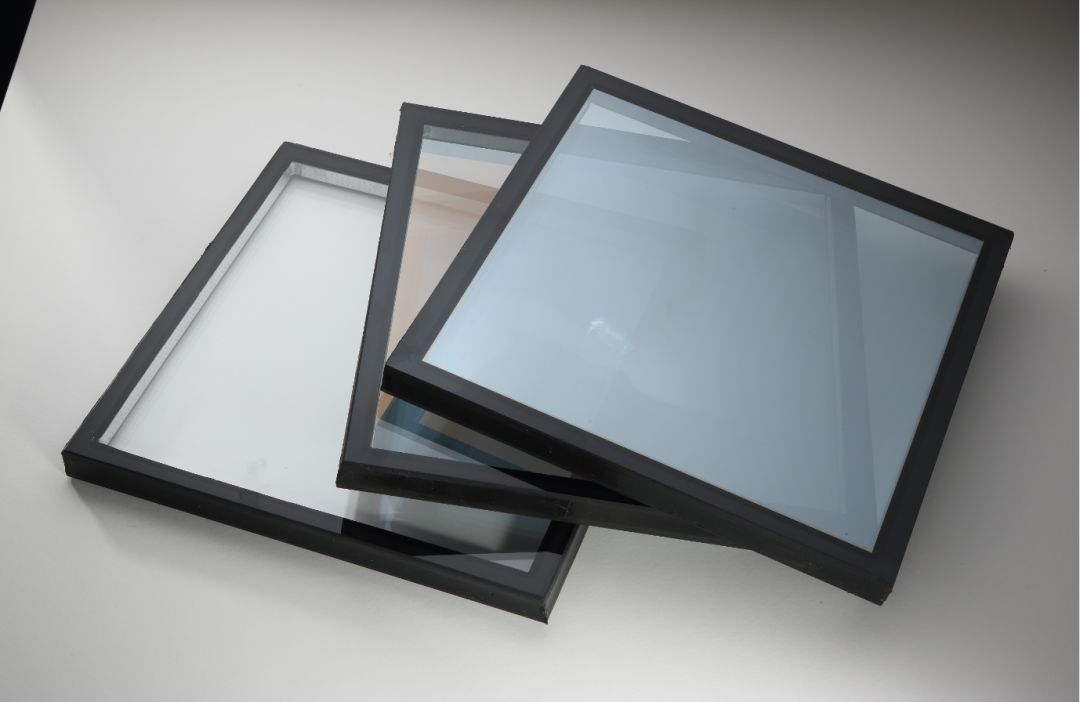
Vol.3
Choose The Glass That Has Been Double-Chambered Convection Tempered And Thermally Homogenized
As the largest component in a building's doors and windows, the safety of glass is of paramount importance. Ordinary glass is easy to break, and the broken glass slag can easily cause secondary damage to the human body. Therefore, the choice of tempered glass has become the standard.
Compared with the single-chamber tempering process, the convection fan of the glass using the double-chamber convection tempering process ensures the stability of the temperature control in the furnace, and the convection tempering effect is better.
The advanced convection circulation system improves the heating efficiency, makes the glass heating more uniform, and greatly improves the glass tempering quality. The double-chamber convection-tempered glass has a mechanical strength that is 3-4 times that of ordinary glass and a high deflection that is 3-4 times larger than that of ordinary glass. It is suitable for large-area glass curtain walls.
The flatness waveform of tempered glass is less than or equal to 0.05%, and the bow shape is less than or equal to 0.1%, which can withstand the temperature difference of 300℃.
The characteristics of the glass itself make the self-explosion of the glass inevitable, but we can reduce the probability of self-explosion. The probability of self-explosion of tempered glass allowed by the industry is 0.1%~0.3%.
Self-explosion rate of tempered glass after thermal homogenization treatment can be greatly reduced, and the safety is further guaranteed.
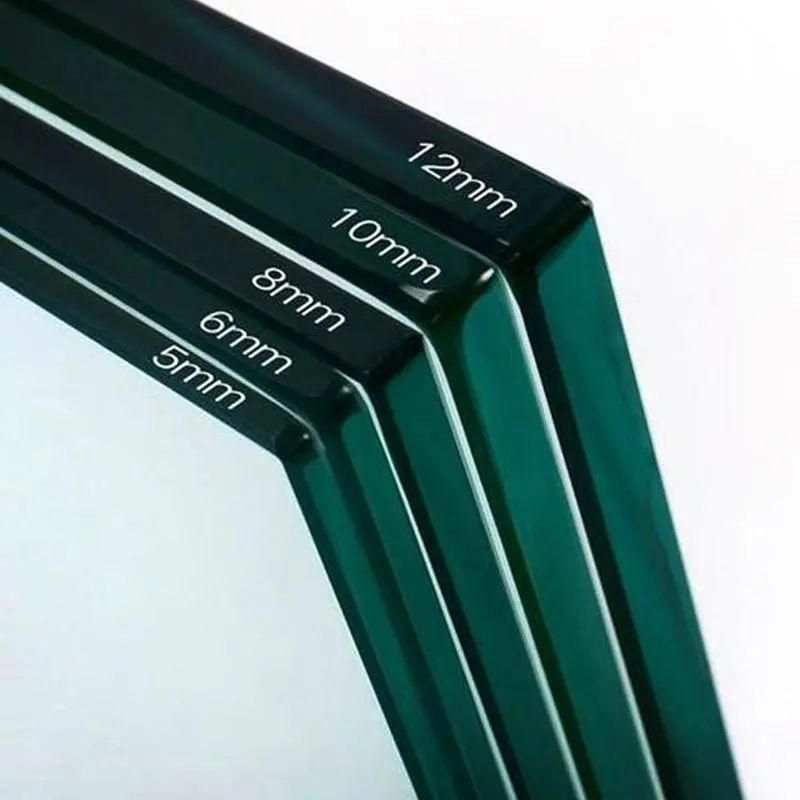
Vol.4
Choose The Right Type Of Glass
There are thousands of kinds of glass, and the glass commonly used in building doors and windows is divided into: tempered glass, insulating glass, laminated glass, Low-E glass, ultra-white glass, etc. When choosing the type of glass, it is necessary to choose the most suitable glass according to the actual needs and decorative effects.
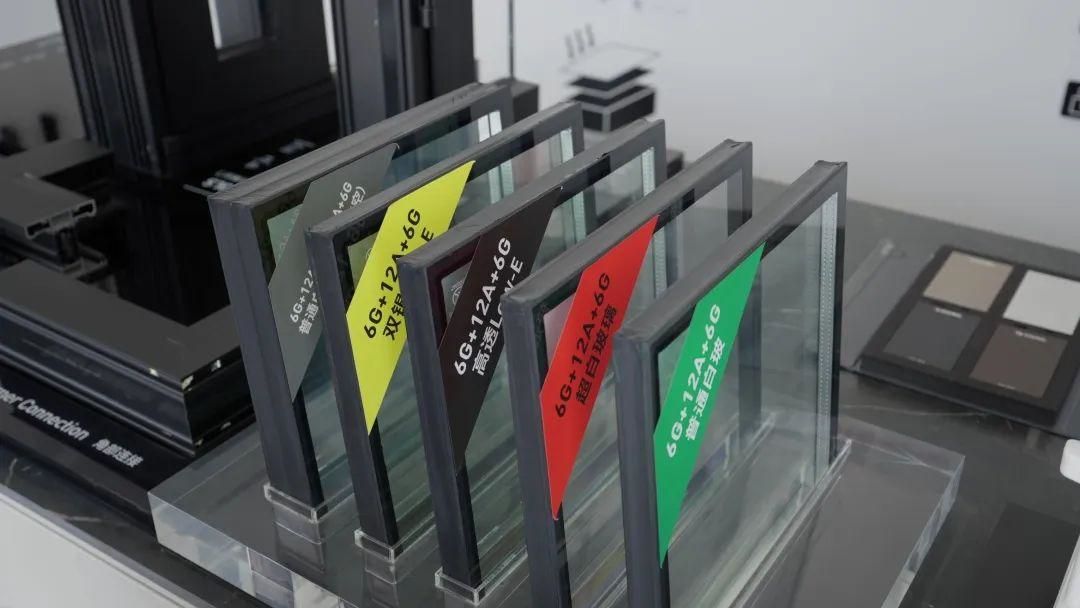
Tempered Glass
Tempered glass is heat-treated glass, which has higher stress and is safer than ordinary glass. It is the most widely used glass for building doors and windows. It should be noted that the tempered glass can no longer be cut after tempering, and the corners are relatively fragile, so be careful to avoid stress.
Pay attention to observe whether there is a 3C certification mark on the tempered glass. If conditions permit, you can observe whether the cut scraps are obtuse-angled particles after being broken.
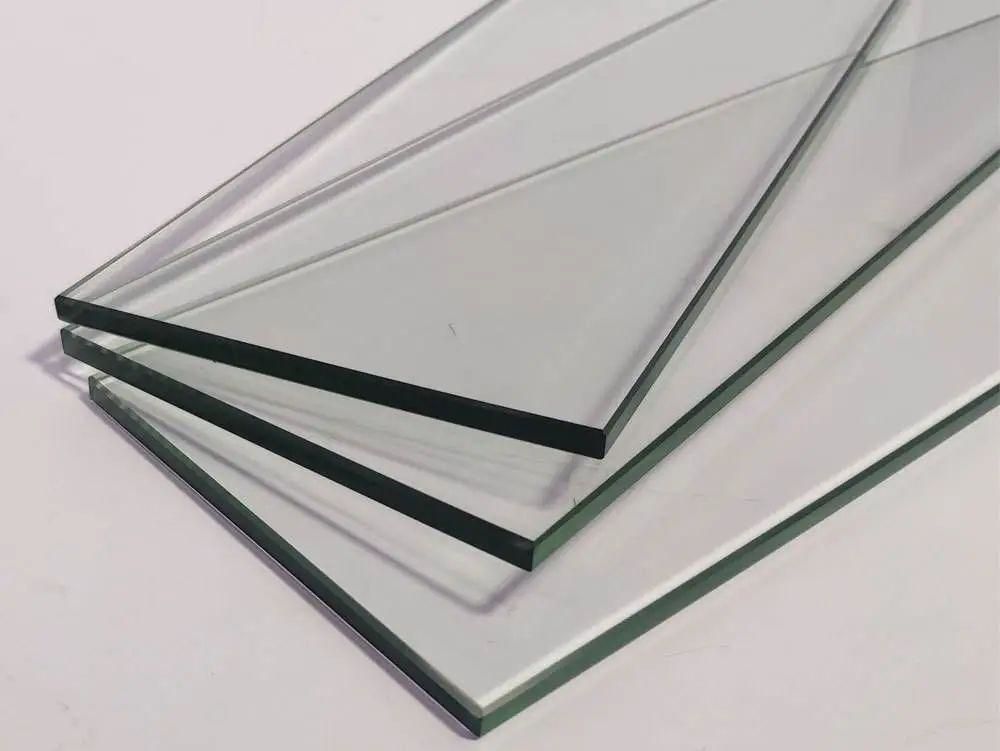
Insulating glass
This is a combination of two or more pieces of glass, the glass is separated by a hollow aluminum spacer filled with desiccant inside, and the hollow part is filled with dry air or inert gas, and butyl glue, polysulfide glue or silicone is used.
Structural adhesive seals the glass components to form the dry space. It has the characteristics of good sound insulation and heat insulation, light weight, etc.
It is the first choice for energy-saving architectural glass. If a warm edge spacer is used, it will keep the glass from forming condensation above -40°C.c
It should be noted that under certain conditions, the thicker the insulating glass, the better the thermal insulation and sound insulation performance.
But everything has a degree, and so does insulating glass. Insulating glass with more than 16mm spacers will gradually reduce the thermal insulation performance of doors and windows. Therefore, insulating glass does not mean that the more layers of glass the better, nor the thicker the glass, the better.
The selection of the thickness of the insulating glass should be considered in combination with the cavity of the door and window profiles and the area of the door and window openings.
Applicable scene: Except for the sun roof, most of the other facade buildings are suitable for use.
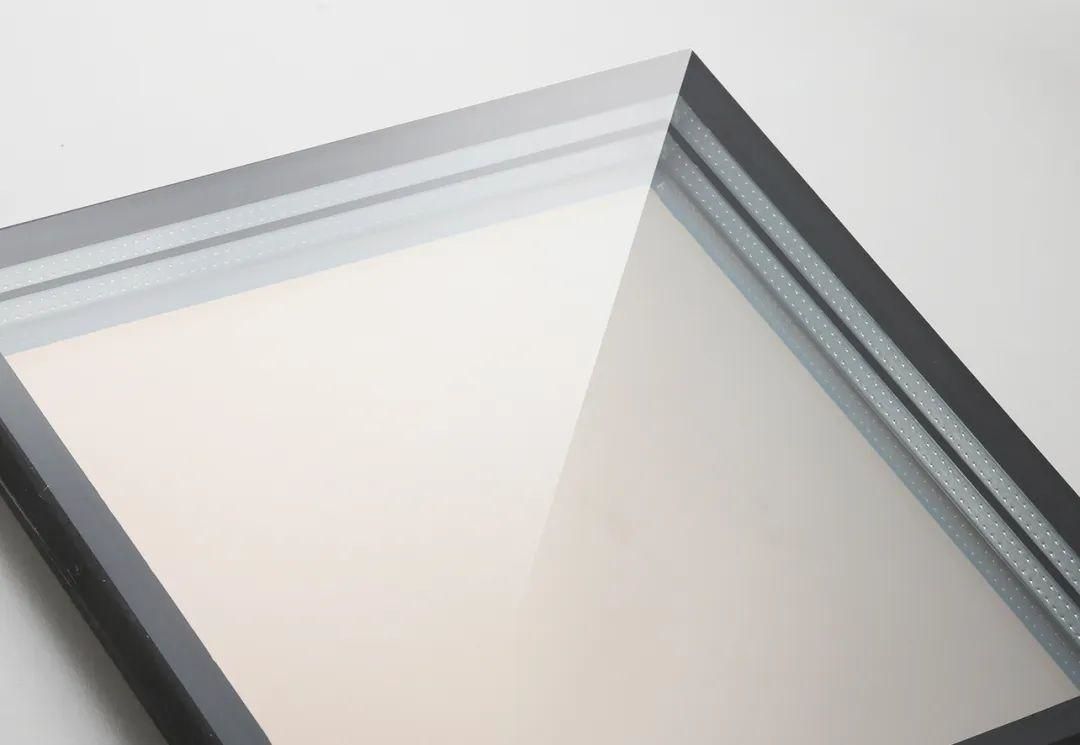
Laminated Glass
Laminated glass is made of organic polymer interlayer film added between two or more pieces of glass. After special high temperature and high pressure process, the glass and the interlayer film are permanently bonded as a whole to become high-grade safety glass. Commonly used laminated glass interlayer films are: PVB, SGP, etc.
Under the same thickness, laminated glass has a significant effect on blocking medium and low frequency sound waves, which is better than insulating glass. This stems from the physical action of its PVB interlayer.
And there are more annoying low-frequency noises in life, such as the vibration of the external air conditioner, the humming of the subway passing by, etc. Laminated glass can play a good role in isolation.
The PVB interlayer has excellent toughness. When the glass is impacted and ruptured by external force, the PVB interlayer can absorb a large amount of shock waves and is difficult to be broken down. When the glass is broken, it can still remain in the frame without being scattered, which is a real safety glass.
In addition, laminated glass also has a very high function of isolating ultraviolet rays, with an isolation rate of more than 90%, which is very suitable for protecting valuable indoor furniture, displays, works of art, etc. from ultraviolet rays.
Applicable scenarios: sun room roofs, skylights, high-end curtain wall doors and windows, spaces with medium and low frequency noise interference, indoor partitions, guardrails and other safety requirements, and scenes with high sound insulation requirements.
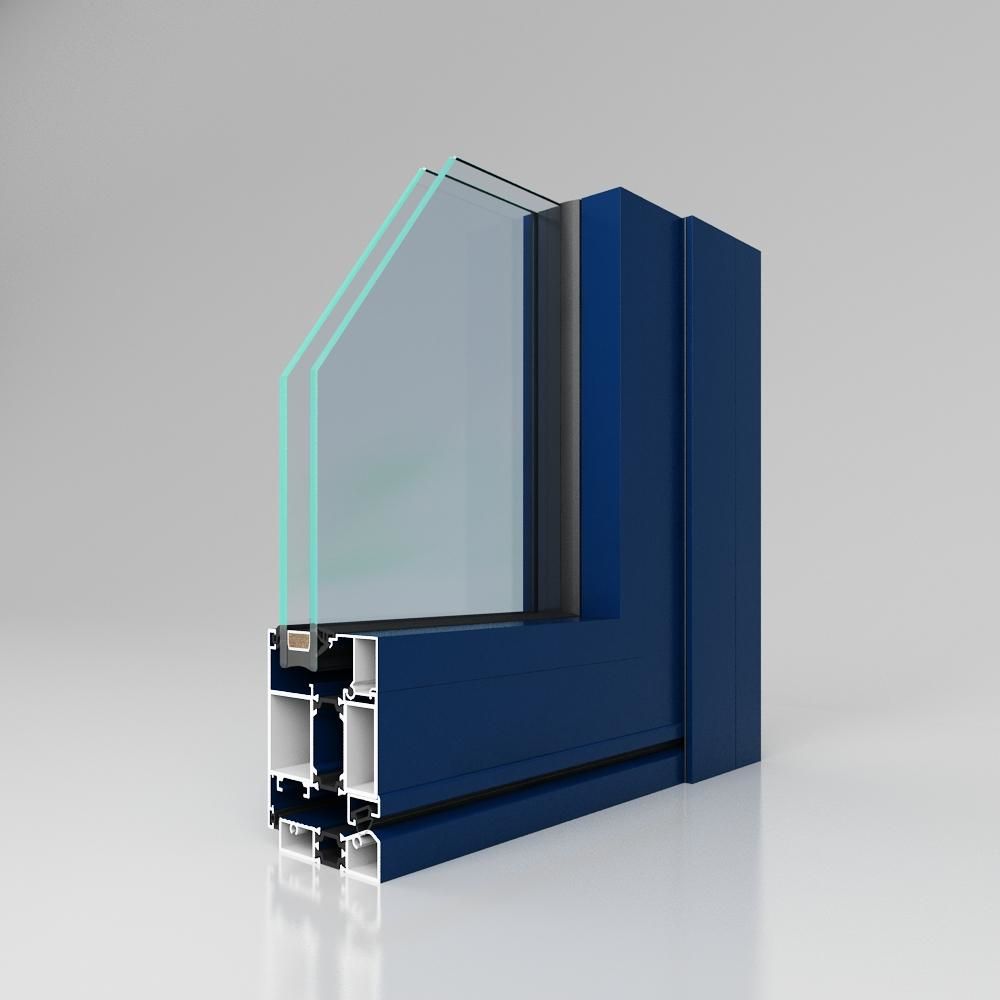
Low-EGlass
Low-E glass is a film glass product composed of multi-layer metal (silver) or other compounds plated on the surface of ordinary glass or ultra-clear glass. The surface has a very low emissivity (only 0.15 or lower), which greatly reduces the thermal radiation conduction intensity, so that the space can achieve the effect of warm in winter and cool in summer
Low-E glass has two-way regulation of heat. In summer, it can effectively prevent excessive solar heat radiation from entering the room, filter the solar radiation into a "cold light source", and save cooling power consumption. In winter, most of the indoor heat radiation is isolated and conducted outwards, maintaining room temperature and reducing heating energy consumption.
MEDO selects Low-E glass with off-line vacuum magnetron sputtering process, and its surface emissivity can be as low as 0.02-0.15, which is more than 82% lower than that of ordinary glass. Low-E glass has good light transmittance, and the light transmittance of high-transmittance Low-E glass can reach more than 80%.
Applicable scenarios: hot summer, cold winter area, severe cold area, large glass area and strong lighting environment, such as south or west sunbathing space, sun room, bay window sill, etc.
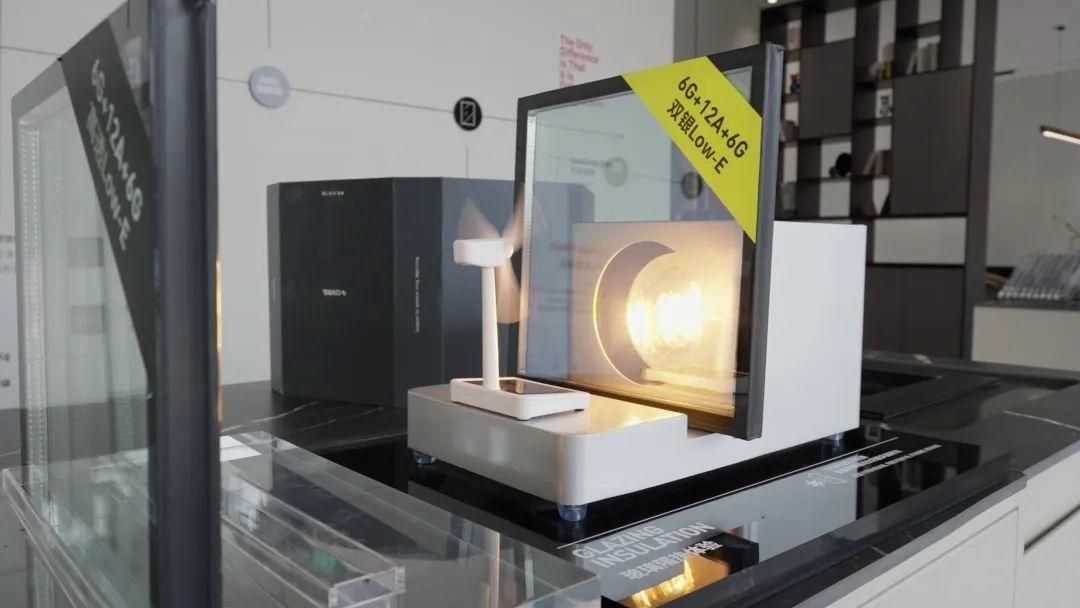
Ultra-white Glass
This is a kind of ultra-transparent low-iron glass, also known as low-iron glass and high-transparency glass. Ultra-clear glass has all the processability properties of float glass, and has excellent physical, mechanical and optical properties, and can be processed in various ways like float glass.
Applicable scenarios: Pursue the ultimate transparent space, such as skylights, curtain walls, viewing windows, etc.
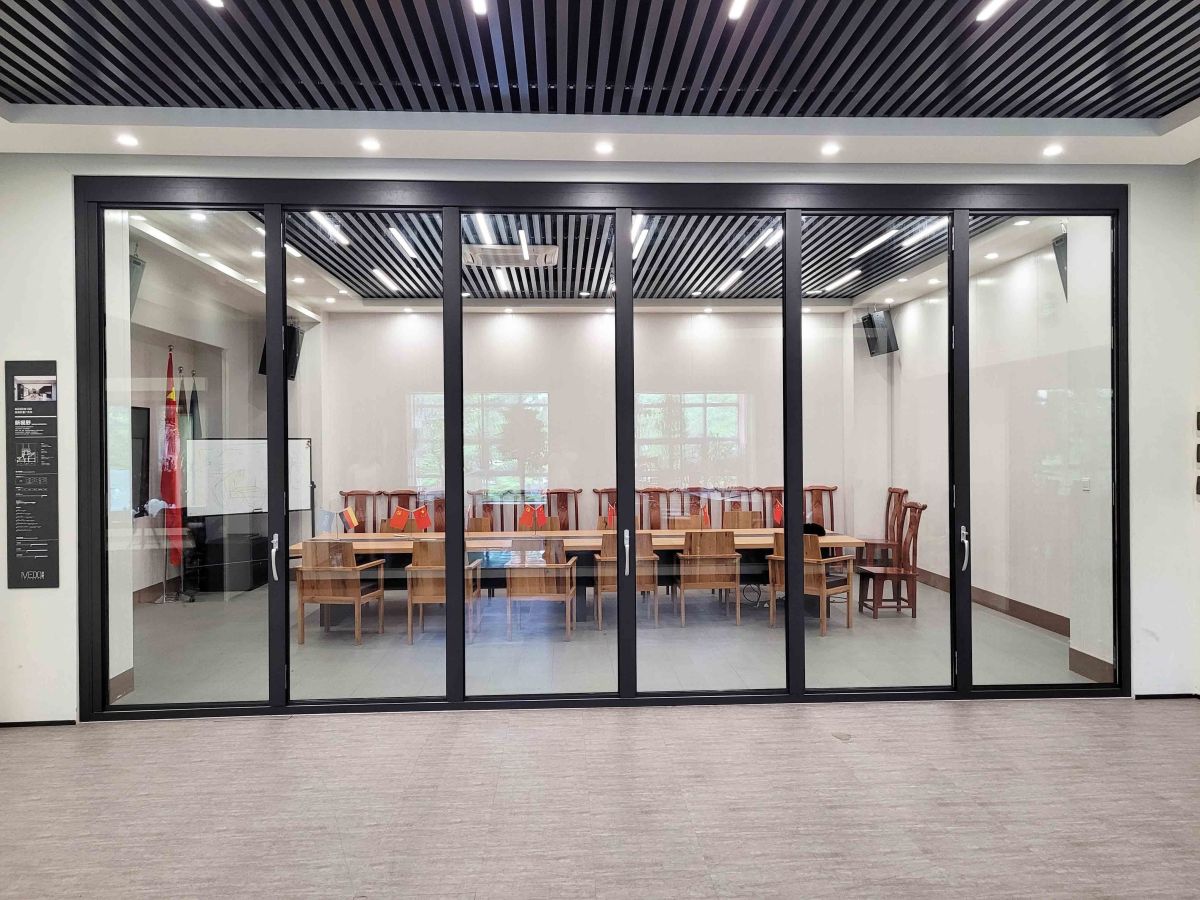
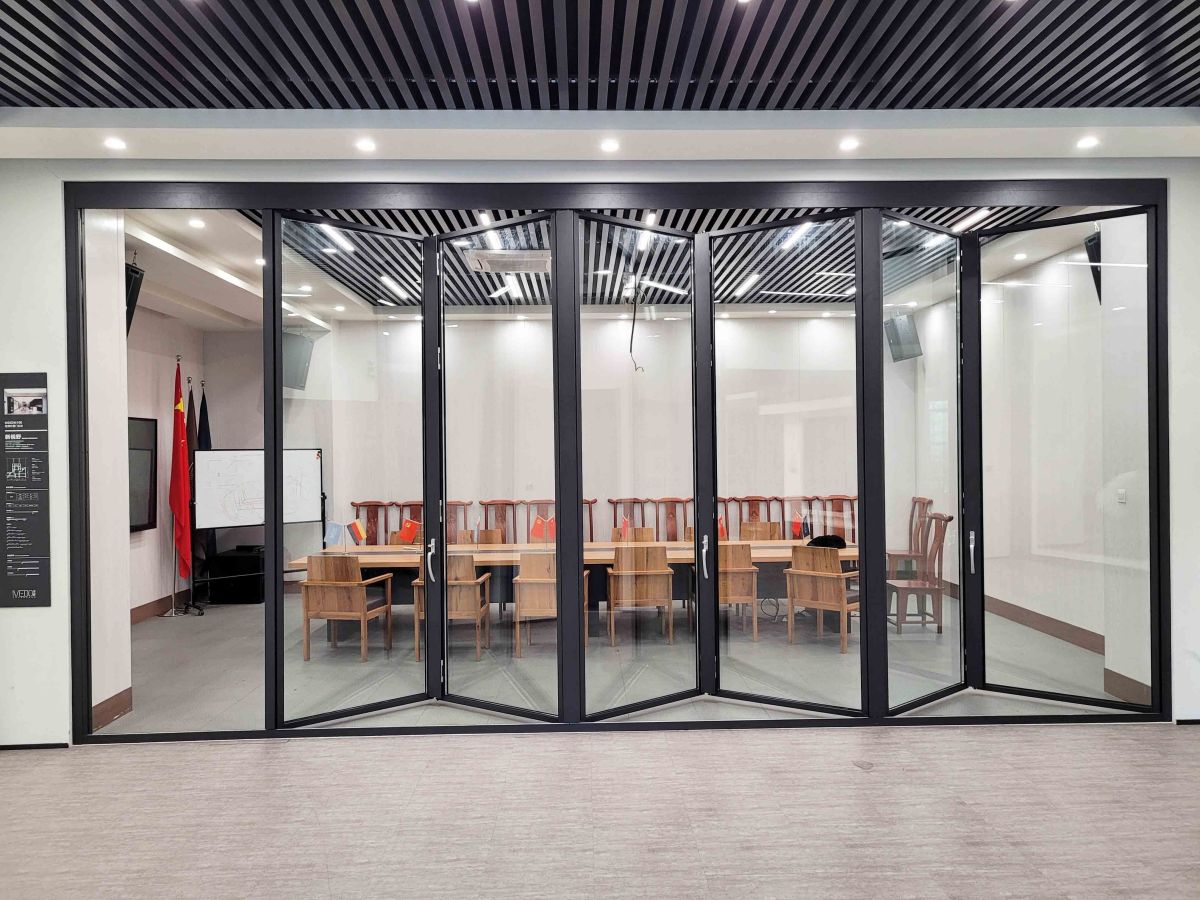
✦
not every piece of glass
All are qualified to be put into the palace of art
✦
In a sense, there would be no modern architecture without glass. As an indispensable subsystem of the door and window system, MEDO is very strict in the selection of glass.
The glass is provided by a well-known glass deep processing enterprise specializing in curtain wall glass at home and abroad for more than 20 years. Its products have passed ISO9001: 2008 international certification, national 3C certification, Australian AS /NS2208: 1996 certification, American PPG certification, Gurdian certification, American IGCC certification, Singapore TUV certification, European CE certification, etc., to present the best results for customers.
Excellent products also require professional use. MEDO will provide the most professional advice according to different architectural design styles and customer needs, and use the most scientific product combination to customize the most comprehensive door and window solutions for customers. This is also the best interpretation of MEDO's design for a better life.
Post time: Nov-16-2022


